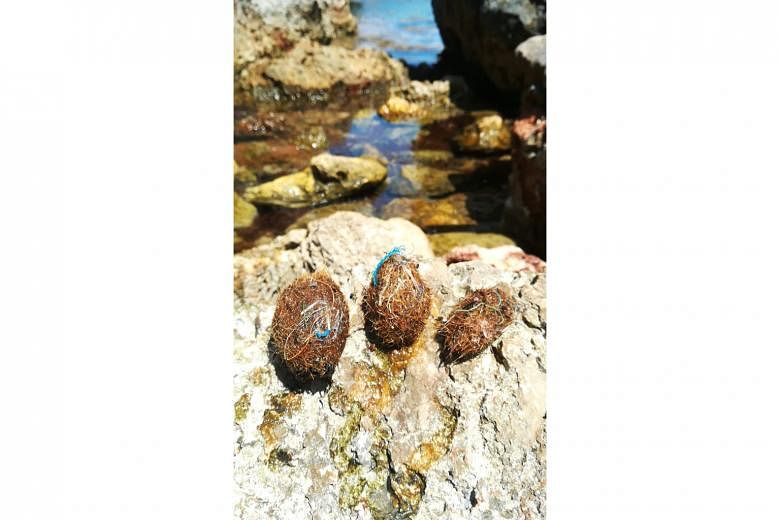PARIS • Underwater seagrass in coastal areas appears to trap bits of plastic in natural bundles of fibre known as Neptune balls, according to researchers.
With no help from humans, the swaying plants - anchored to shallow seabeds - may collect nearly 900 million plastic items in the Mediterranean alone every year, the researchers said in the Scientific Reports journal on Thursday.
"We show that plastic debris on the sea floor can be trapped in seagrass remains, eventually leaving the marine environment through beaching," lead author Anna Sanchez-Vidal, a marine biologist at the University of Barcelona, told Agence France-Presse.
Add pollution control, then, to the long list of services that seagrass provides - for ocean ecosystems and the humans who live near the water's edge.
There are some 70 species of marine seagrass, grouped in several families of flowering plants that - originally on land - recolonised the ocean about 80 million to 100 million years ago.
Growing from the Arctic to the tropics, most species have long, grass-like leaves that can form vast underwater meadows.
They play a vital role in improving water quality, absorb carbon dioxide and exude oxygen, and are a natural nursery and refuge for hundreds of species of fish.
By anchoring in shallow waters, they help prevent beach erosion and dampen the impact of destructive storm surges.
To better understand the plastic-bundling capabilities of seagrass, Associate Professor Sanchez-Vidal and her team studied a species, Posidonia oceanica, found only in the Mediterranean Sea.
In 2018 and 2019, they counted the number of plastic particles found in sea balls that had washed up on four beaches in Mallorca, Spain, which has large seagrass meadows offshore.
There was plastic debris in half of the loose seagrass leaf samples - up to 600 bits per kilogram of leaves.
Only 17 per cent of the tighter-bundled seagrass fibre called Neptune balls contained plastic, but at a much higher density - nearly 1,500 pieces per kilogram of sea balls.
Using estimates of seagrass fibre production in the Mediterranean, the researchers worked out an estimate of how much plastic might be filtered in the entire basin.
The oval orbs - the shape of a rugby ball - form from the base of leaves that have been shredded by the action of ocean currents but remain attached to stems, called rhizomes.
As they are slowly buried by sedimentation, the damaged leaf sheaths form stiff fibres that intertwine into a ball, collecting plastic in the process.
"We don't know where they travel," said Prof Sanchez-Vidal. "We only know that some of them are beached during storms."
AGENCE FRANCE-PRESSE

